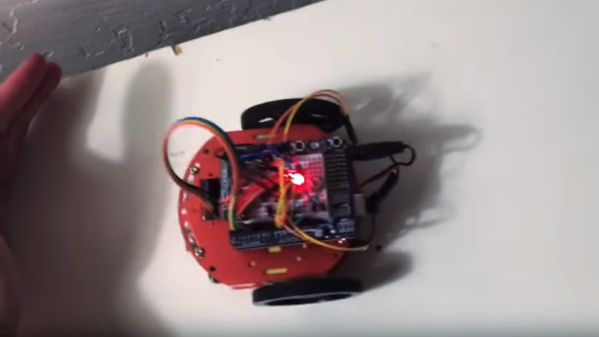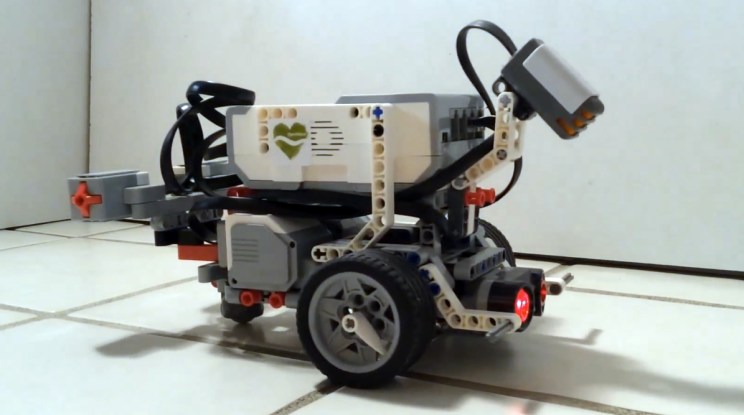When it comes to building a neural network to simulate complex behavior, Arduino isn’t exactly the first platform that springs to mind. But when your goal is to model the behavior of an organism with only a handful of neurons, the constraints presented by an Arduino start to make sense.
It may be the most important non-segmented worm you’ve never heard of, but Caenorhabditis elegans, mercifully abbreviated C. elegans, is an important model organism for neurobiology, having had its entire nervous system mapped in 2012. [Nathan Griffith] used this “connectome” to simulate a subset of the diminutive nematode’s behaviors, specifically movements toward attractants and away from obstacles. Riding atop a small robot chassis, the Arduino sends signals to the motors when the model determines it’s time to fire the virtual worm’s muscles. An ultrasonic sensor stands in for the “nose touch” neurons of the real worm, and when the model is not busy avoiding a touch, it’s actively seeking something to eat using the “chemotaxis” behavior. The model is up on GitHub and [Nathan] hopes it provides an approachable platform for would-be neuroroboticists.
This isn’t the first time someone has modeled the nematode’s connectome in silico, but kudos to [Nathan] for accomplishing it within the constraints an Arduino presents.
Continue reading “Nematoduino: A Roundworm Neural Model On An Arduino”














